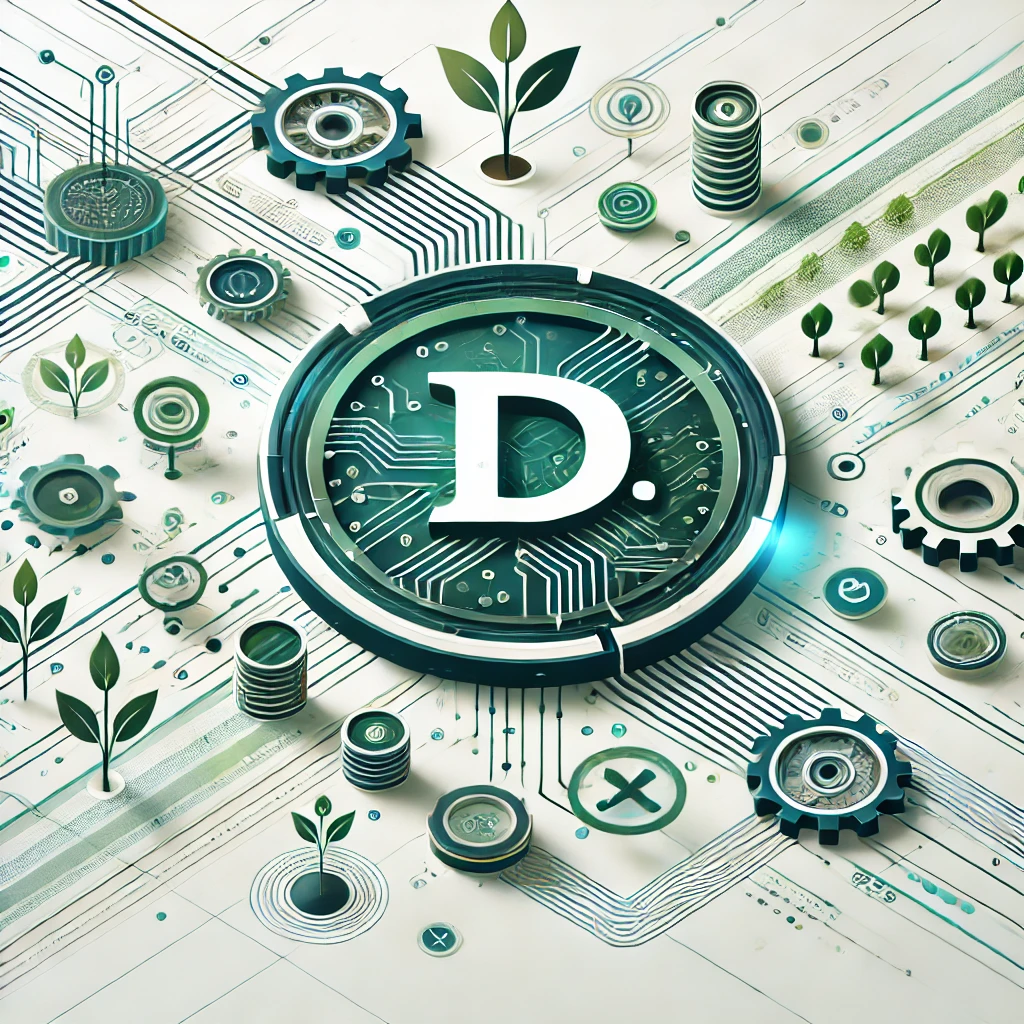The future of agriculture is here, and it’s taking root in the digital world. As the demands on farmers increase—driven by climate change, a growing population, and diminishing resources—agriculture is looking for innovative ways to thrive. This is where d.Farm comes into play. By blending advanced technology with traditional farming practices, d.farm represents the intersection of cutting-edge innovation and sustainable agriculture. As the world grapples with how to produce more food with fewer resources, the rise of digital farming platforms like d.farm presents a compelling solution.
Let’s explore how the fusion of tech and terrain is changing agriculture forever.
What is d.farm?
d.farm is a platform that applies modern technological innovations to the agricultural sector. Using an ecosystem of tools powered by machine learning, data analytics, drones, and satellite imaging, d.farm helps farmers optimize crop production while conserving resources. In an industry where unpredictable weather and rising input costs can mean the difference between success and failure, digital tools are no longer a luxury—they are a necessity.
d.farm connects farmers to real-time data from their fields, offering insights into soil health, crop growth, moisture levels, and even pest activity. By utilizing sensors, drones, satellites, and AI-based models, d.farm takes precision farming to new heights, helping farmers maximize their yields while reducing costs and environmental impacts.
The Power of Technology in Agriculture
Farming has long relied on traditional methods passed down from one generation to the next. While these methods have been effective for many years, they no longer meet the challenges posed by modern-day pressures. From extreme weather events to unpredictable seasons, farmers are operating in a new era, one where data is king and technology is their ally.
The emergence of precision agriculture has marked a significant shift in how farming is done. Through precision farming, technology enables farmers to target specific areas of their field, adjusting irrigation systems, fertilizer, or pesticides based on precise data, rather than applying the same treatments to entire fields. This hyper-targeted approach minimizes waste, maximizes efficiency, and, importantly, reduces costs for farmers. Thanks to digital platforms like d.farm, farmers can make better, more informed decisions in real-time.
For example, d.farm’s satellite and drone imaging can monitor fields remotely to detect potential issues such as pest invasions or water stress. By catching issues early, farmers can avoid significant crop damage, reducing the need for widespread pesticide or irrigation usage. This proactive approach increases farm productivity while minimizing negative environmental consequences.
Resource Efficiency and Sustainability
As global populations continue to grow, the pressure on agricultural systems to produce more food while preserving our planet’s resources becomes even more significant. One of the major benefits of d.farm’s technology is its ability to drive resource efficiency. Traditional farming methods often result in overuse of water, fertilizers, and pesticides, damaging both the environment and the farmer’s bottom line. But d.farm empowers farmers to only use the necessary amounts of resources, ensuring that everything from irrigation to crop treatments is applied at optimal levels.
The platform’s soil moisture sensors and real-time weather analytics make irrigation decisions more accurate than ever. Farmers can precisely water only those areas of their fields that need it, avoiding unnecessary waste and conserving water in regions where it’s scarce. As water conservation becomes a global priority, technologies like d.farm’s ensure that every drop counts.
In addition to water efficiency, the platform helps manage soil health, encouraging practices that promote sustainability. Rather than relying on broad, generalized methods for fertilizing fields, d.farm enables farmers to assess soil composition with precision and apply nutrients where needed. This results in healthier crops and reduces the environmental impact of excess fertilizer runoff, which can contaminate surrounding ecosystems.
By reducing waste in every step of production—whether it’s water, fertilizer, or energy use—d.farm is transforming farming practices to be more sustainable and eco-friendly, giving farmers the tools they need to ensure long-term environmental health and productivity.
Data-Driven Decisions for Smarter Farming
In an era where data drives success in virtually every industry, agriculture is no exception. With d.farm’s data analytics capabilities, farmers are no longer left guessing when it comes to optimizing crop yields. The platform collects vast amounts of information about everything from soil health to climate trends to the status of crops in real-time. With this detailed and accurate data at their fingertips, farmers can make proactive decisions to maximize output while mitigating risks.
Rather than following rigid farming schedules dictated by vague generalities or environmental guesses, d.farm’s platform uses machine learning models to predict future trends based on historical and current data. For example, with predictive analytics, farmers can forecast crop yields and plan harvests more precisely, minimizing losses that can occur from poor timing or inadequate preparation. Additionally, they can anticipate weather disruptions and mitigate damages with proactive measures.
Perhaps the most powerful feature of the platform’s predictive capabilities is its ability to foresee pest outbreaks and diseases before they escalate into bigger problems. Pest management becomes less of a reactive process and more of a proactive one, ensuring that minimal pesticide is used and crop health is maintained.
Connecting Farmers Through Innovation
d.farm is more than just a tool for individual farmers; it’s a global platform fostering collaboration and innovation. By connecting farmers with the latest advancements in digital farming, d.farm encourages the sharing of best practices, successful techniques, and technological innovations. Users can access online communities to discuss trends, ask questions, and troubleshoot any obstacles they encounter.
Through these communal networks, farmers across the world can access the collective knowledge of the agricultural community, making farming smarter and more innovative everywhere. By building these bridges between farmers and providing them with data-driven solutions, d.farm is reducing the knowledge gap between different farming regions, helping to ensure a consistent level of high-tech agriculture for all.
Looking to the Future: The Next Phase of d.farm
d.farm is poised to shape the future of farming. But even as it stands now, its impact is undeniable. As farming continues to adapt to the changing realities of climate, sustainability, and a globalized food system, the digital tools that d.farm offers will become even more integrated into agricultural practices. The future will likely see further advancements in automation, AI, and machine learning that will allow farms to operate even more efficiently. We might see entire fields monitored automatically by drones, with each piece of land having tailored management plans.
Looking ahead, blockchain technology could also be used by d.farm to improve transparency in the agricultural supply chain, ensuring that farmers receive fair pricing for their goods and consumers can trace their food’s journey from farm to table.
Conclusion: The Future is Digital
d.Farm represents a turning point in agricultural history, merging innovation with tradition in a way that benefits farmers, consumers, and the environment. By giving farmers access to data-driven tools that enhance precision, optimize resources, and reduce environmental impact, d.farm is building the foundation for the future of sustainable agriculture.
The rise of d.farm is a clear indication that tech and terrain are not opposing forces, but rather allies in cultivating smarter, more resilient farming practices. As the agricultural landscape continues to change, platforms like d.farm will be the driving force behind the most innovative solutions in the industry—shaping not just the farms of tomorrow, but the entire global food system.




